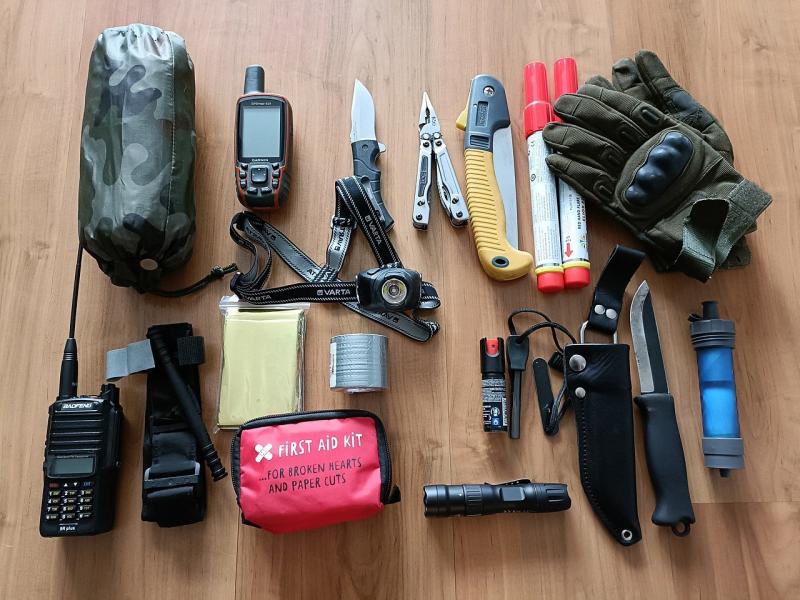Windlass Rod Tourniquet
A windlass rod tourniquet has four parts: a strap, a buckle, a rod, and a clip with a triangle fastener.
- To begin, place the tourniquet 2 to 3 inches above the wound. You want the tourniquet to be between the wound and the heart.
- Avoid placing the tourniquet on top of the wound or on a joint. Warn the person that tightening the tourniquet may be painful, but it is necessary to control the bleeding. (To man) Sir, this may hurt.
- Attach the buckle or pass the end of the strap through the buckle and then think PULL-TWIST-CLIP.
- PULL the free end of the strap until the tourniquet is as tight as you can get it around the limb. Some tourniquets may allow you to fasten the strap back onto itself after you have pulled it as tight as possible.
- TWIST the rod to finish tightening the tourniquet.
- Keep twisting the rod until the bleeding stops, or until you can't twist it anymore. Don't stop, even if the person complains of pain.
- Then, CLIP the rod in place to prevent it from untwisting.
You may see other types of tourniquets in addition to windlass rod tourniquets. Although tourniquets may have slightly different designs, all are applied in generally the same way: position the tourniquet, tighten it, and secure it in place. Follow the manufacturer's instructions for applying the tourniquet that you have. No matter what type of tourniquet you are using, you can apply a second tourniquet if you've tightened the first tourniquet as much as you can, but the bleeding hasn't stopped. Apply the second tourniquet above the first, closer to the heart. After you've applied the tourniquet, don't loosen or remove it—this should only be done by a medical professional.



